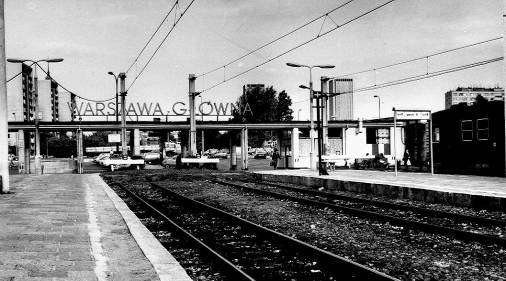
„Between the side pavilions and outside the south pavilion three groups of dead-end tracks and platforms were placed. The first group of three tracks and three side platforms (two one edged and one island), made for dispatching the long-distance trains was placed between the side pavilions. The side platforms were connected by a bay platform, in front of the main hall. South of the long-distance tracks, three tracks and two platforms for the suburban rail were placed. South of them in turn, five tracks and three platforms were built for both long-distance and suburban rail. They reached passages placed at the exit to the vehicle stand. The pavement leads the passengers to bus and tram stops on Towarowa street. There was no separate hall for arrivals. Luggage halls were entered directly from the street. The luggage was hauled back to the luggage hall the quickest way, without disturbing the flow of passengers.” (M. Krajewski, “Dzieje Głównego Dworca Kolejowego w Warszawie”, PWN, Warszawa 1971).

